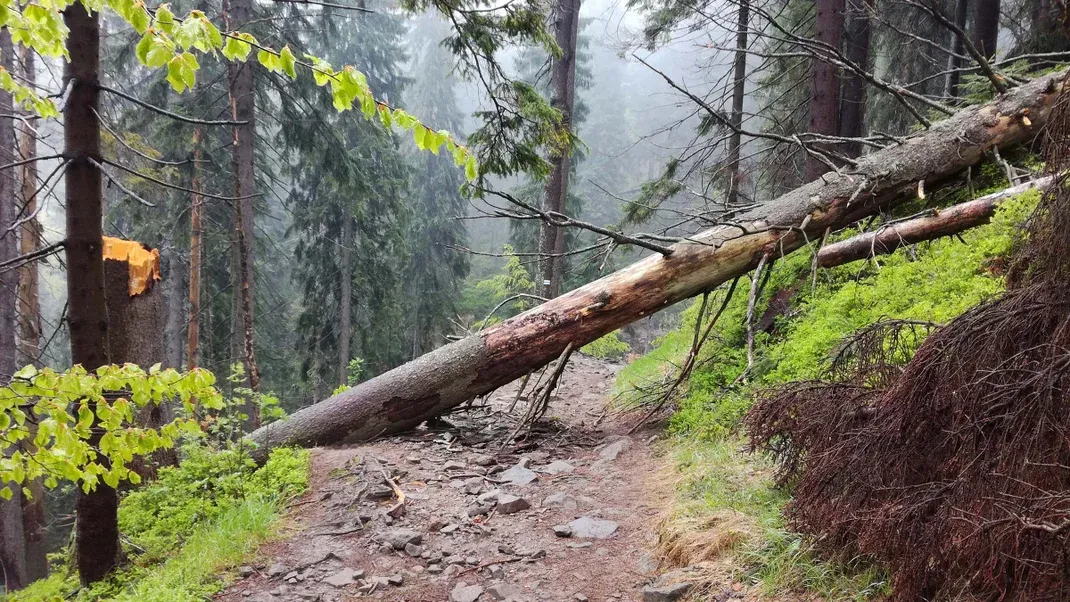This Study Predicts Who Is Most Likely to Get Hurt in the Wilderness
A new study has identified factors that could predict who is most likely to get injured in the wilderness. Researchers found that men, younger individuals, and those with less outdoor experience were more likely to sustain injuries during outdoor activities. The study, published in the journal Wilderness & Environmental Medicine, also highlighted the importance of proper planning, training, and preparation to minimize the risk of injuries in the wilderness. By understanding the factors that contribute to wilderness injuries, outdoor enthusiasts can take steps to stay safe and avoid potential harm during their adventures.

As more and more people seek out outdoor adventures and explore the wilderness, the risk of injury or accidents also increases. A recent study conducted by a team of researchers aimed to identify who is most likely to get hurt in the wilderness and what factors contribute to these injuries.
The study, published in the Journal of Wilderness Medicine, analyzed data from over 10,000 wilderness-related injuries that occurred over a 10-year period. The researchers examined a wide range of factors, including the age, gender, experience level, and activities of the injured individuals, as well as the location and circumstances of the injuries.
One of the key findings of the study was that age played a significant role in determining the likelihood of getting hurt in the wilderness. The researchers found that younger individuals, particularly those in the 18-35 age group, were the most likely to sustain injuries while participating in outdoor activities. This may be due to the fact that younger people tend to engage in more high-risk activities and may also have less experience and knowledge of how to navigate the wilderness safely.
Gender also emerged as a factor in the study, with men being more likely to get injured in the wilderness compared to women. This may be attributed to the fact that men are more likely to engage in risky behaviors and are often more prone to taking physical risks during outdoor activities.
In terms of experience level, the study found that beginners and novice outdoor enthusiasts were at a higher risk of getting hurt in the wilderness compared to more experienced individuals. This is not surprising, as less experienced individuals may not have the necessary skills and knowledge to navigate the wilderness safely and may also be more likely to underestimate the risks involved in outdoor activities.
The type of activity also played a crucial role in determining the likelihood of getting injured in the wilderness. The study found that certain activities, such as hiking, mountain biking, and rock climbing, were associated with a higher risk of injury compared to activities such as camping or birdwatching. This is likely due to the fact that these activities involve more physical exertion and have a higher likelihood of accidents or falls.
The location and circumstances of the injuries were also examined in the study, with certain patterns emerging. For example, injuries were more likely to occur in remote or rugged terrain, where access to medical help may be limited. Additionally, the study found that injuries were more likely to occur in the afternoon and evening, suggesting that fatigue and decreased visibility may contribute to accidents in the wilderness.
Overall, the study provides valuable insights into the factors that contribute to wilderness-related injuries and can help outdoor enthusiasts, as well as medical professionals and policymakers, better understand and mitigate these risks. By identifying who is most likely to get hurt in the wilderness and what factors contribute to these injuries, the study can inform the development of targeted education and prevention efforts to promote safety in outdoor activities.
For example, the findings of the study could be used to develop educational programs aimed at younger individuals, emphasizing the importance of proper risk assessment, preparation, and safety measures while engaging in outdoor activities. The study could also inform the development of safety guidelines and regulations for specific outdoor activities, such as rock climbing or mountain biking, to minimize the risk of accidents and injuries.
In addition, the study's findings can help medical professionals and first responders better prepare for and respond to wilderness-related injuries. By understanding the demographic and activity-related patterns of injuries, medical professionals can tailor their training and resources to effectively address the specific needs of injured individuals in the wilderness.
Ultimately, the study's findings underscore the importance of promoting safety and risk awareness in outdoor activities and highlight the need for targeted interventions to reduce the likelihood of getting hurt in the wilderness. As more people continue to seek out outdoor adventures, it is crucial to understand and address the factors that contribute to wilderness-related injuries, in order to ensure the safety and well-being of outdoor enthusiasts.




